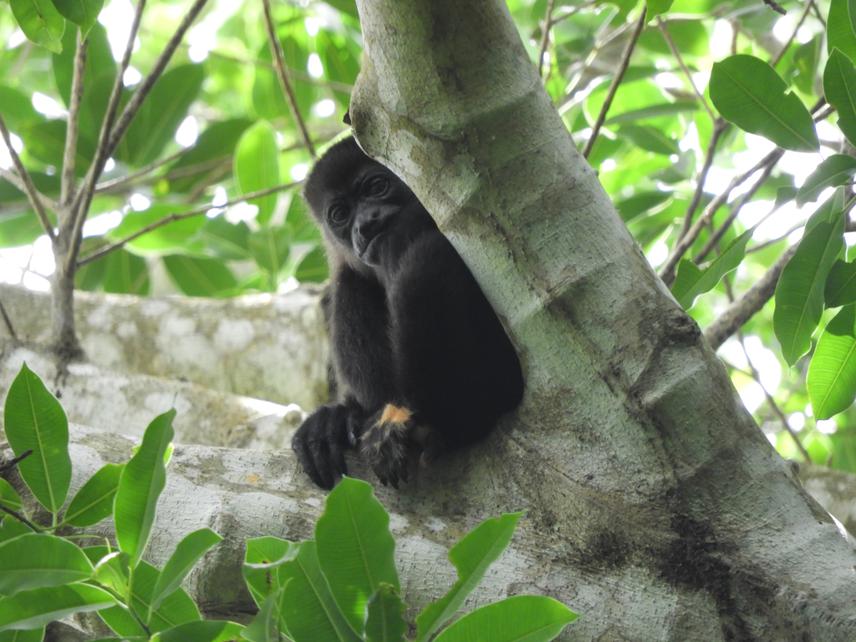Tabor Whitney
The continuous conversion of natural habitats to agricultural fields and pasturelands creates fragments and patches that isolate animals forcing them to adjust to new environments with different resources. Quantifying the impact change in habitat quality has on host health and survivability is central to understanding the ecology of these individuals. I propose to determine the effect of differing levels of habitat degradation on host physiology and welfare of Mexican mantled howler monkeys (Alouatta palliata mexicana) in Los Tuxtlas, Mexico.
Monitoring how populations of non-human primates change over time can provide important information for conservation efforts, but their long-generation times require a decade or more to assess the effect of habitat change, which is often too long to be helpful. Utilizing health markers can provide actionable information in less time. However, many of these markers are currently under-utilized.

Juvenile Female Mantled Howler Monkey. © Ricardo Jesús Ortiz Zárate.
To address this gap, my project uses non-invasive sample collection and rapid lab analyses to provide single time-point snapshots of wild animal health and well-being. While my approach is generalizable across mammals, here I focus on an endangered population of mantled howler monkeys in Los Tuxtlas, Mexico. The Los Tuxtlas region is one of the last remnants of tropical forest on the coastal plain in the Gulf of Mexico. The region is an anthropic matrix of forest remnants that are immersed between cities and agriculture and vary by size, amount of available food, and proximity to different types of human disturbance. This variation in ecological attributes allows me to measure howler monkey health across a gradient of disturbances. By simultaneously quantifying ecological attributes and generating biomarker data, I can determine the aspects of habitat degradation that adversely impact howler monkeys to create mitigation strategies that promote their health.
I will collect faecal samples from social groups of howler monkeys residing in different habitat types. To assess physiology, I will use non-invasive tools for the gut microbiome, glucocorticoid metabolites, and intestinal inflammation. More importantly, we will integrate the use of physiological markers into conservation management and planning to outline which aspects of habitat degradation are most adversely impacting the health of this endangered species. Ultimately this project provides useful, cost-effective, and accessible tools to rapidly assess a target population’s health and promote their welfare. These methods provide a model for other wildlife conservationist interested in rapidly assessing the health of their target populations.
Header: Measuring DBH of Ficus. © Tabor Whitney.